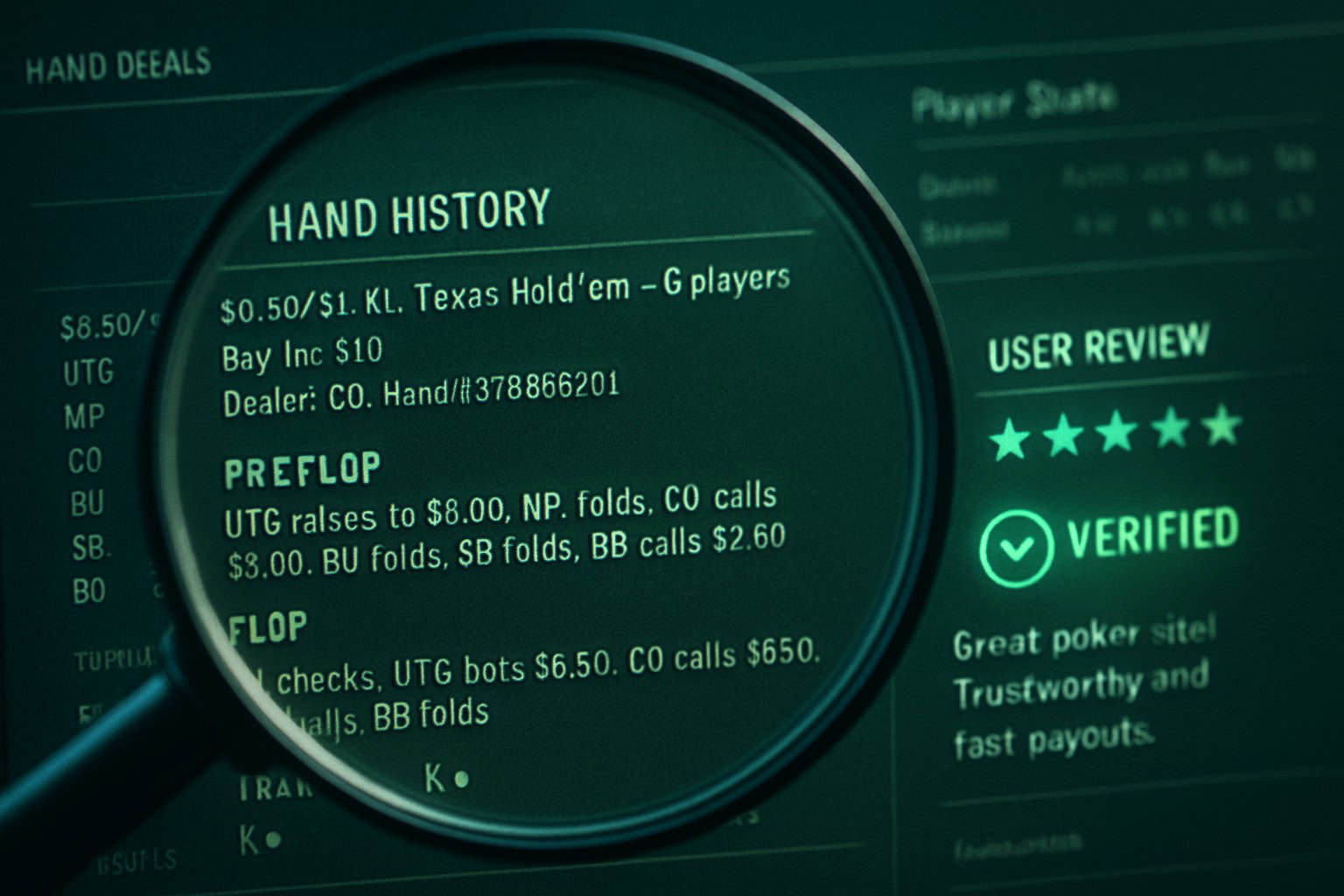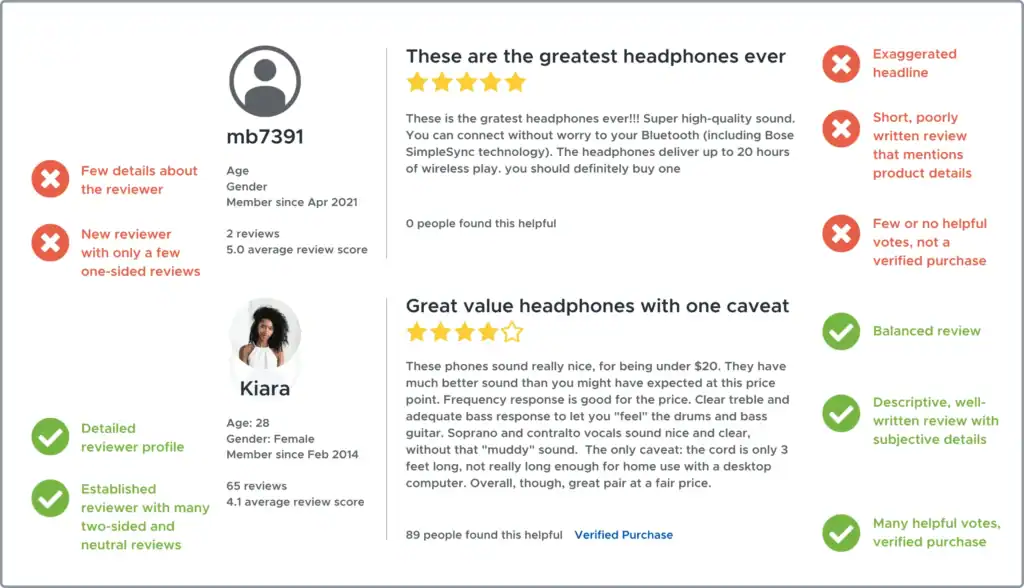
Where Can I Find Verified User Reviews On Online Poker Bots?
You should look for community-verified threads, and forums where there is an active mod. The most trustworthy area to find user reviews about pokerbots will be community-verified threads and forums. Once you have located the community-verified threads and forums, the next step is to locate if you can create a pyramid of evidence to support user reviews based on investigative journalism and consumer platforms. To create a pyramid of evidence, look for time-stamped hand history records, screenshots, and the same exact set-up each time. To get started with your product, go to Proven Expert and read the customer reviews for PokerBot AI, watch some demo videos, and test the software yourself with your own hand history logs.
However, since all major operators and media have teamed up to stop cheating and eliminate false reviews, you will need to put in the due diligence to believe anything a user says.
What Counts as a Verified Review in Gray Markets
There are several elements of a verified user account, which include:
- Time-stamping of a hand history record;
- Complete video of the table and input field;
- Consistent usernames/nicknames;
- Enough detail so that another person could duplicate the scenario.
Because of the ever-increasing restrictions placed on game integrity by operators, using anonymous postings and claims with no evidence of the actual incident occurring, is a very high-risk practice. Do not use screen shots of gameplay alone, without the capability to access the underlying log file(s) for verification purposes. In fact, if you use a screen shot without the corresponding log file(s), consider it to be anecdotal and un-verifiable.
Operators and media have collaborated with each other to battle cheating and unfair assistance, and therefore the burden of proof for verifying user reviews has significantly increased in 2025.
Levels of Trust in User Reviews of Poker Bots
Use source mapping techniques to map the evidence you have collected into different “levels of trust.”
- First tier: Statements from operator or investigative journalists about law enforcement actions with enforcement dates and enforcement methods.
- Second tier: Moderated community forums that require users to follow specific post structures and challenge user-generated claims made within the peer community.
- Third tier: Platforms that allow consumers to validate each other but are only able to do so if they implement strong filters and know what to look for in fake consumer review postings.
Using the method of multiple tiers of trust will allow you to reduce the number of times you rely on one singular platform for validation. It is most important to use multiple tiers of trust when validating user reviews for poker bots since information posted on these sites is often incorrect or misleading.
Enforcement Stories & Media on Poker Bots
Statements of public integrity by operators and vendors concerning the process of enforcing integrity standards, including the metrics they use to define suspicious behaviors and how they verify those behaviors. These statements provide a framework for understanding evidence and the context surrounding enforcement stories.
These are not product reviews, however, they provide a foundation for determining what evidence is considered “real.
Media Reporting of Poker Bot Enforcement
Independent journalists report on enforcement actions between operators and vendors including dates, quotes and implications.
When independent journalists report on cross-checks of solver-like behavior, or collaborative efforts to limit real-time assistance, it provides a basis to evaluate the credibility of individual user claims, versus background noise. Utilize independent journalists’ articles as references to use while reading user-generated community reports.
Community Verification of Poker Bot Reviews

How Moderated Forums Verify Reviews
You can use moderated forums and tech forums on Reddit or other social media platforms to gather and analyze hand history data from users who post their hand history data in a structured format. The structure allows you to quickly and easily extract the action taken, the amount of money in the stack when it occurred, and the timing of the action so you can determine whether the user is actually using a “bot-like” strategy.
First, make sure to follow the submission rules for each forum. Then, look for threads started by a large number of active users who have reached the same conclusion about the user’s behavior.
Threads with verified bots
Find out if anyone has made a claim that may affect the credibility of a specific item you have identified; find all current threads with real-hand data, video synchronized together and information on a users alias based upon their previous posts. Many current threads exist and actively engage the topic of community responsibility for ethical enforcement of community standards, showing how communities evaluate claims and what type of evidence they want to see. Examine as many active threads as possible to minimize your chance of being deceived by a third-party or contributing to a false story.
What Do Archives of 2+2 Tell us About Pokerbots?
Long-term established forums for discussing topics allow you to see commonality among posters based upon trends and commonalities between months. The longer the time period of a claim regarding a bot or anti-bot measures continues to appear in the same thread and is also questioned by well-seasoned posters who remain active and engaged; the greater the level of confidence you will have in the claim. Also, determine if you are seeing a consistent flow of reports throughout the month or if you are seeing report-related threads in conjunction with event-related threads, to measure how much reporting occurs vs. the amount of commenting that occurs.
Using Review Sites to Find Questionable Pokerbots:
A number of review sites are available to assist you in identifying questionable pokerbots; nonetheless, you should be aware of what types of protection measures are implemented by each review site to prevent fraudulent manipulation. The type of protection measures that a review site implements will give you an idea of the direction that the site is going; as well as, the fact that it is impossible to create a completely foolproof way to protect a site using investigative journalism will help you. By researching the reviewer’s profile, the posting date, and the support documentation associated with the post you can protect yourself from being misled by either false or manipulated user reviews of pokerbots. Furthermore, many review sites annually release reports that outline the number of fake reviews they have removed and the methods they used to remove them. Nonetheless, many review sites have been accused of allowing scam artists to artificially increase the rating of their product.
Warning Signs of Fake Pokerbot Reviews

Look out for copy-pasted language, the use of copy-pasted portions of praise about several products, and a rapid spike in the number of five-star ratings. Look out for unsubstantiated superlatives, generic images/screenshots, and a lack of replicability in the user testimonial. Regulatory agencies are increasing the regulations regarding fraudulently created online testimonials, so although your risk of being mislead will continue to decrease, the cost of creating fake online testimonials will continue to increase.
How to Generate Poker Bot Test Evidence That Is Verifiable
Week-long Pilot Plan
A small, low-risk trial: play 2-3 tables at once, use a proxy for each table, document the time when your bot begins playing, the delay between the time your bot’s decision is executed, and your hand history. Record your screen with the visible clock and the id number of each table. Daily export raw hand histories. Those are the edges that this kit takes your experience and makes it available for someone else to review.
Documentation & File Naming Conventions
Document your file folder with the date you collected data. Include all raw logs, exported hand histories, and video files that you recorded during your session in the folders. Document the hash of the name of each file to ensure that no one can modify the original files. Also, a brief changelog has been kept for each emulation environment, that includes all of the settings that you used during your session (Emulation Clone version, timing band, number of tables you played).
Peer Review
Write a short summary of your findings: provide context, describe the methodologies you used, state your sample size, and provide links to your raw files, along with the steps necessary to replicate and validate your experiment. Distribute the summary to experienced technical posters and ask for feedback. If your evidence stands up to scrutiny, it will have more value than 100 anonymous reviews.
Protecting Your Identity & Evidence Privacy

Protect both your identity and the integrity of your evidence by:
- Creating a clean emulator profile to separate your player’s identities;
- Using a per-instance residential or mobile proxy and a unique device fingerprint for each table to prevent the identification of either the actual or virtual IP address;
- Never using pirated versions of poker bots, because they will nearly always contain malware that will compromise your safety and bankroll;
- Removing the identifiers that reveal the identity of your players and the identifiers that reveal the table numbers from your video (timers and the action bars on the poker client) prior to posting it to the web. By doing this, you will protect your identity and preserve your evidence.
Mini-FAQ
Where do I start if I have only 30 minutes?
Begin with one mod-active forum thread and one reputable news piece on integrity, then look for recent posts that include raw hands and video. anchor your search to dates and artifacts.
Are consumer review sites useful here?
Yes, if you read them as signals, not verdicts. check the platform’s anti-fake reports, then scrutinize reviewer profiles and dates. pair them with community evidence and your own pilot.
How do I avoid legal trouble while sharing evidence?
Do not post private data, follow forum rules, and stick to raw gameplay artifacts. regulators now penalize fake testimonials, so state limits clearly and keep your files intact.
Can I trust a single spectacular YouTube demo?
Treat it as inspiration, not proof. without raw hands, timing data, and replication notes, a slick video is just a trailer.
